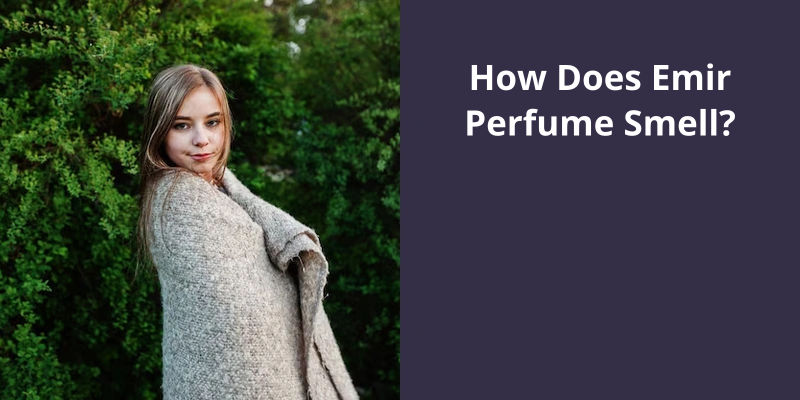However, it’s important to acknowledge that everyone has their own taste and preferences, and some might not enjoy certain aspects of life as much as others do. Although oud is highly valued and appreciated by many for it’s unique and complex scent profile, others might find it overwhelming, intense, or unpleasant, due to it’s combination of earthy, woody, smoky, sweet, and animalic notes. Whether someone likes or dislikes oud is a matter of personal perception and cultural background, and there’s no right or wrong answer when it comes to olfactory preferences. Ultimately, it’s up to each individual to decide what fragrances suit them best and bring them joy or discomfort, and to respect others' choices accordingly.

What Is the Symbolism of Oud?
The symbolism of Oud goes beyond it’s use as a fragrance or the high price tag that comes with it. It represents a connection between humans and the divine. In many cultures, the aroma of Oud was believed to attract the attention of the gods or to elevate the soul towards spiritual realms. It was used as an offering or a means of purification in religious rituals.
Moreover, Oud is also associated with power and authority. In ancient Egypt, it was used by pharaohs and members of the royal family to indicate their elevated status. In Ancient Greece, it was used as a symbol of victory and strength. The use of Oud was believed to instill courage and confidence in warriors and leaders.
From it’s use in ancient religious ceremonies to it’s modern-day association with luxury, it’s played a significant role in human history. It’s enduring appeal lies in it’s ability to evoke a sense of spirituality, power, and exclusivity.
The significance of oud in Arab culture extends far beyond it’s use in fragrance and perfumery. It holds deep cultural and religious roots, and it’s distinctive aroma has been a hallmark of traditional Arab hospitality for centuries. From it’s spiritual significance to it’s use in modern pop culture, oud remains an integral part of the Arab world.
What Is Oud in Arab Culture?
Oud is a complex and fascinating aspect of Arab culture. It’s a rich and varied history, which is closely tied to the cultural, social, and religious practices of the region. The fragrance is used in a wide range of contexts, from daily life to special occasions and ceremonies. Oud isn’t just a scent; it’s a way of life.
People from all around the world have come to appreciate the complexity and depth of this exotic aroma.
It’s a deep, rich, woody aroma that’s unlike anything else. The scent is often described as warm, earthy, and musky, with hints of spice and sweetness.
It’s more than just a scent; it’s a reflection of the Arab worlds deep history, traditions, and identity.
Now that we know what the word oud means in Arabic, let’s take a closer look at the significance of this unique musical instrument and it’s deep cultural roots. From it’s ancient origins to it’s modern-day popularity, the oud has played a vital role in the art and music of various Middle Eastern regions. But what makes this seemingly simple piece of wood so special? Let’s explore further.
What Does Oud Mean in Arabic?
However, the word oud in Arabic has a much deeper and complex meaning. To many, it represents traditional Arabic music and culture, as the oud is an essential instrument in Middle Eastern music. The oud has a long history that reaches back to ancient Mesopotamia and is believed to have originated from the ancient Persians. It’s popularity spread throughout the Middle East and eventually reached Europe during the Renaissance period.
The oud is a precursor to the guitar, and it’s design has inspired many other instruments, such as the lute. It’s sound is unique and soulful, characterized by it’s deep, resonant tones that evoke feelings of nostalgia and reflection.
The oud has also been a symbol of cultural identity and pride for many Arabs. It’s deep connection to their history and traditions has made the instrument a source of national pride and a way to bridge the gap between generations. For many, learning to play the oud is a rite of passage that connects them to their roots and enriches their cultural understanding and appreciation.
The oud has also been an instrument of peace and unity, bringing people together across cultural and national boundaries. Musicians from all over the world have been drawn to it’s unique sound and the opportunities it provides for collaboration and creativity. The oud has been a vital component of many intercultural concerts and festivals, providing a medium for artists to share their music and connect with audiences from all walks of life.
It’s ability to bring people together and inspire creativity and collaboration makes the oud an invaluable cultural treasure, cherished by people all over the world.
The Cultural Significance of the Oud in Different Regions and Countries Across the Middle East
- The oud is commonly referred to as the “king of instruments” in the Middle East.
- It’s a long history and has been played in the region for thousands of years.
- The oud is used in both secular and religious music, and is often associated with Sufi music.
- Each country in the Middle East has it’s own unique style of playing the oud, with variations in tuning and playing technique.
- In Iraq, the oud is often used in classical music and is played with a plectrum.
- In Syria, the oud is played with a style known as “tarab,” which emphasizes emotional expression and improvisation.
- In Egypt, the oud is a common instrument in traditional folk music and is often played in duos with the tabla.
Source: Oud – Wikipedia
Not only is oud significant in Muslim culture, but it also holds a special place in the world of fragrance. The rich, woody aroma is highly valued in the perfume industry, where it’s often blended with other scents to create unique and complex fragrances. Despite it’s popularity among perfumers, oud remains a luxury ingredient due to it’s rarity and high cost.
What Is the Significance of Oud?
Oud, or agarwood, has a rich and storied history. The wood itself comes from a tree known as Aquilaria, which grows in parts of Southeast Asia and India. The tree can only produce the coveted oud after it’s been infected with a certain type of mold, causing a reaction in the wood that results in the distinctive fragrance. This rarity and complexity make oud highly valued, with prices reaching thousands of dollars per pound.
Beyond it’s monetary worth, oud holds a deeper significance in cultures across the world. Historically, it’s been used in traditional medicine practices for it’s reported benefits such as reducing inflammation and aiding in digestion. Oud is also believed to have spiritual properties, especially in Muslim communities. Muslims believe that the burning of agarwood chips can serve as a way to connect with the divine and ward off evil spirits.
In addition to it’s use in religious and spiritual practices, oud has been sought after in the world of perfumery for centuries. High-end perfumers often incorporate the unique scent of agarwood into their fragrances, creating complex and captivating blends. These perfumes can evoke a sense of luxury and exclusivity, as the high cost of oud means that it’s often found only in the most expensive and exclusive perfumes.
Despite it’s cultural and perfumery significance, the production of oud isn’t without controversy. The high demand for the wood has led to over-harvesting in some regions, causing concerns about the sustainability of oud production. Some companies have started using synthetic oud in their products to address these concerns, but the unique and complex nature of natural oud can’t be fully replicated.
The Process of Harvesting and Extracting Oud From the Aquilaria Tree
- Girdle the Aquilaria tree
- Wait for several years for the resin to form
- Harvest the resinous wood from the tree
- Extract the resin from the wood through distillation or solvent extraction
- Use the oud resin in perfumes, incense, or medicine
Conclusion
Personal preferences in fragrances and aromas are deeply subjective and can vary greatly from person to person. It’s important to respect these differences and not impose one's own scent preferences on others. Ultimately, the beauty of fragrance lies in the diversity of scents and the ways in which they can evoke different emotions and memories for each individual.





